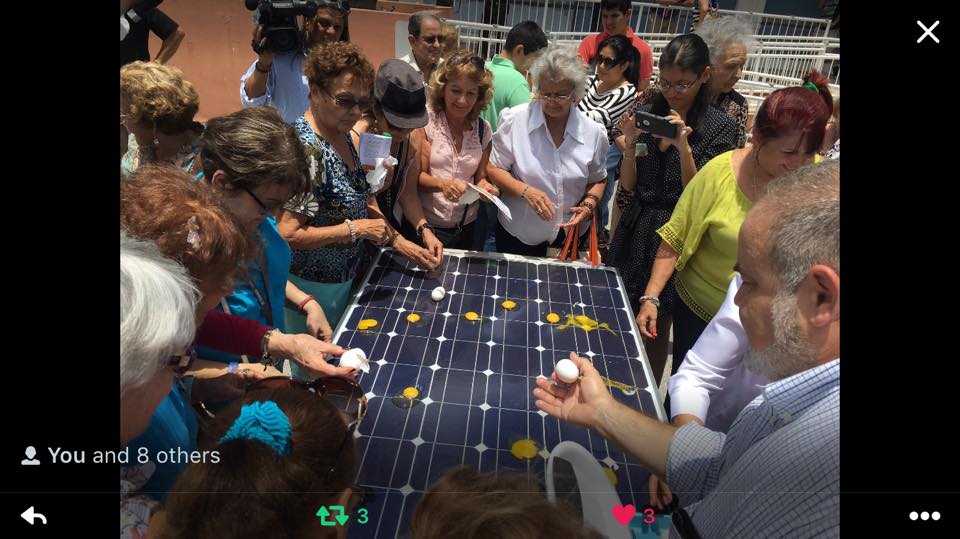
As a response to the rising temperatures across South Florida, artist Xavier Cortada developed and led the participatory art performance, Hot for Hialeah, in an attempt at creating resiliency within residents in the face of global climate change. The performance functioned as part of an educational community event organized by community leaders and the American Red Cross, the intent of which was to inform participants on the problems associated with rising temperatures and how to deal with them. The performance itself consisted of local community residents frying eggs on a solar panel, the majority of participants being seniors, who are particularly susceptible to issues associated with climate change. The setting of Hialeah is contextually important, Hialeah being an urban area that is generally more susceptible to higher temperatures than rural or coastal areas1. Coupled with the level of heat that Hialeah experiences is their low level of an urban tree canopy, less than 10% of coverage in the municipality2.
Hot for Hialeah appears simple in operation, at least at first glance. The act of frying eggs on a solar panel points to an obvious, and literal, representation of the impact of rising temperatures in the Hialeah area. However, the context of this piece, notably that of its site and participant specificity, requires deeper questioning than is possible through such a superficial viewing. Hialeah itself is a lower income community with a large population of the elderly, two large factors when determining how an area will deal with effects from global warming. Not only does Hot for Hialeah work directly with the most vulnerable people in this instance, but it acknowledges this vulnerability. By having his participants fry eggs on a solar panel, Cortada addresses the intersection of environmentally-sustainable technology in a lower-income, urban environment, aptly presenting a contrast between the utility of high temperatures dependent on the context of the environment upon which they are affecting. This also presents a reflection on solar energy that is two-sided, as Cortada is able to display both the positive effects of increased solar energy as well as its more dangerous components.
This project stages itself as a community intervention of sorts, one that acknowledges the natural world as something to be respected as well as to be utilized. However, the intent of this project, as is the same in the majority of Cortada’s work, is to produce a tangible social impact in the community. This art performance is not meant to only exist as a conceptual meditation, but an educational and relevant display of the effects of global warming.